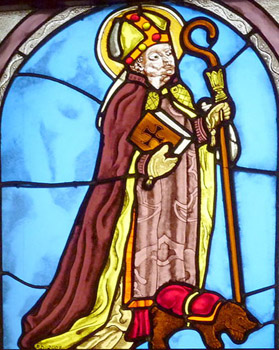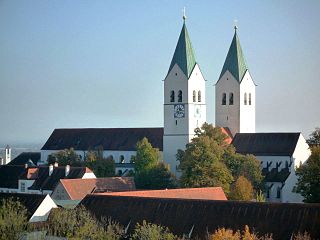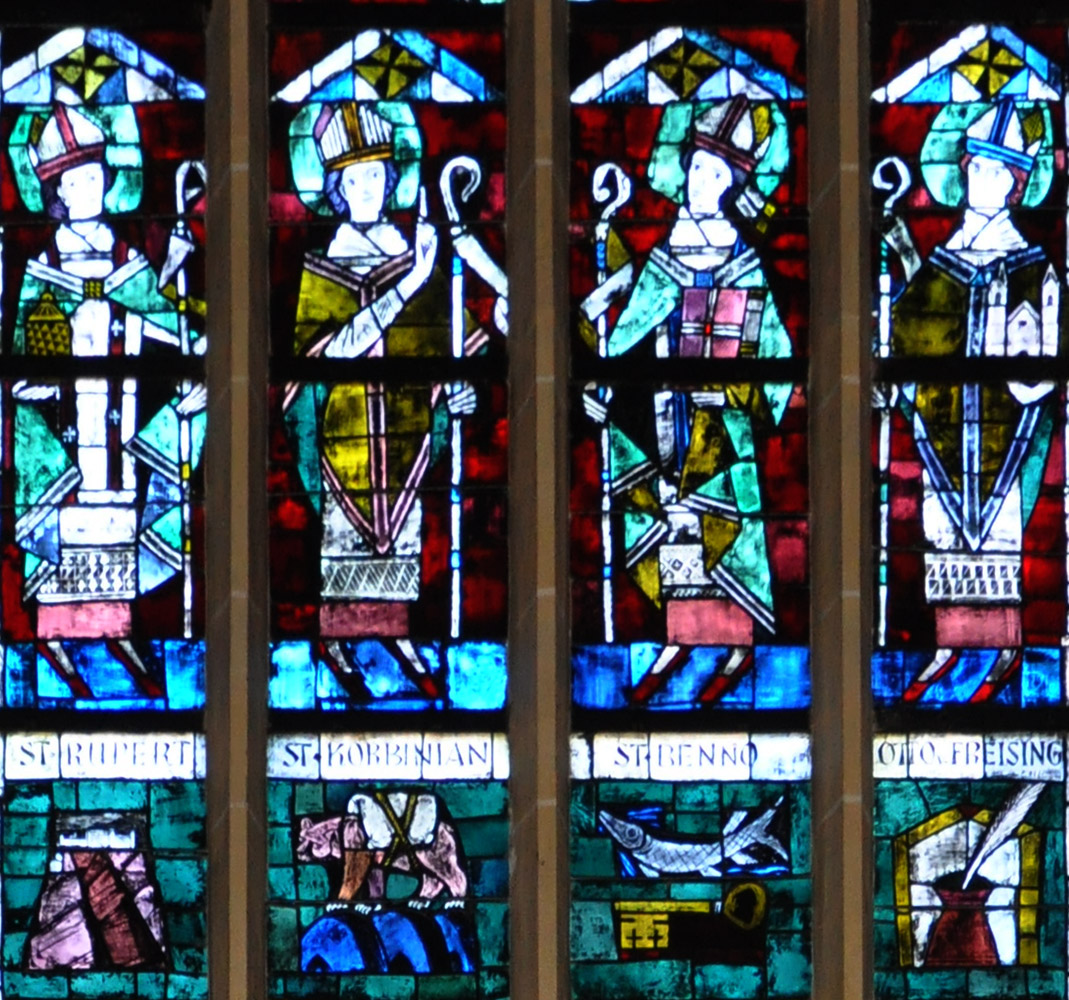

Four German Bishops

Mid-20th century
Stained glass
Frauenkirche, Munich, Germany
All the bishops pictured in this register of the window are associated with Germany, and all but Benno specifically with the archdiocese of Munich-Freising. All have mitres and croziers that identifiy them as bishops. (Real bishops hold the crozier in the left hand, but for symmetry the two on the right in this window use their right hands.) The cloth band hanging from below the crook of each crozier is a sudarium, which a bishop uses to protect the shaft of the crozier from the sweat of his hand.
On the left, St. Rupert is the bishop who first brought Christianity to the area, on the invitation of Duke Theodo. He developed salt works in his headquarters at Salzburg, which was then part of the duchy, so his attribute in this image is a salt bucket. Unlike the other bishops in this window, he wears a pallium, the red band of cloth with the crosses on it. This refers to the status of archbishops of Salzburg as "metropolitans," with authority over their own and neighboring dioceses.


Next is St. Corbinian, bishop of Freising in the 8th century. He evangelized in upper Bavaria. (Munich and Freising today form a combined archdiocese, with the Frauenkirche as a co-cathedral.) Beneath the portrait is Corbinian's attribute, a bear carrying a pack.
St. Benno, Bishop of Meissen in the 11th century, is also pictured above his attribute, a fish and a key.
The image on the far right is labeled "Otto v[on] Freising." Medieval Freising had two bishops of that name. Otto I served from 1138 to 1158, Otto II from 1184 to 1220. Both bishops were also authors, so the pen and ink below the portrait do not distinguish the one from the other. However, the maquette in the figure's left hand could only be appropriate to Otto II. It appears to represent Freising's co-cathedral as it looks today, with two pointy towers flanking a triangular roof (second picture at right). Usually such a maquette refers to the person's involvement in founding or building a church. Construction of the cathedral began a year after Otto I's death and was completed during Otto II's episcopacy, in 1205.2
Read more about St. Rupert, St. Corbinian, and St. Benno
Stained glass photographed at the Frauenkirche by Richard Stracke, shared under Attribution-NonCommercial-ShareAlike license.